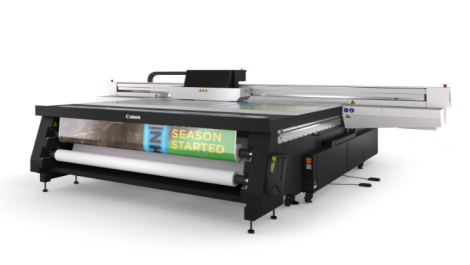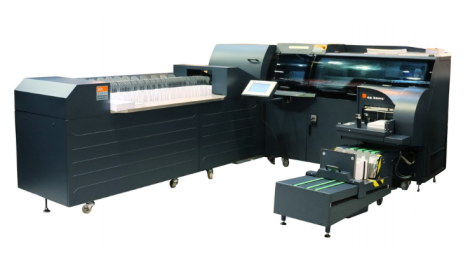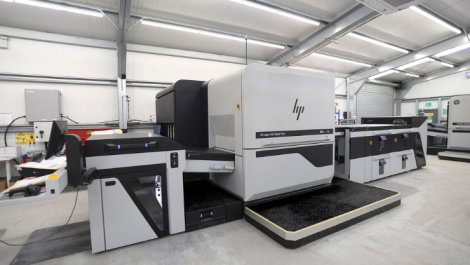Sophie Matthews-Paul visited the IMI Annual European Inkjet Conference and came away with new pointers to the future of this rapidly expanding technology.
As an ever-evolving industry, digital print has more than its fair share of summits and events, but sometimes it is interesting to be able to dig a little deeper and learn more about where the technology is going. It’s refreshing to learn about areas not necessarily associated directly with everyday print as we know it.
Determining inkjet’s role in the future used to require a crystal ball. Developers had an idea of where technology could be taken but often the integration was trickier, with the need to network with systems’ integrators, ink chemists and associated specialists. Visiting a specialist conference can simplify the process of assessing what could happen next.
IMI Europe’s recent 19th Annual European Ink Jet Printing Conference in Lisbon contained a wealth of topics pointing to trends that confirm commercial print production is growing quickly. It’s also spreading its wings into new and related applications, such as 3D additive prototyping and modelling, ceramics, specialist packaging, textiles and, of course, labels.
The emphasis ranged from the inkjet production print market to niche areas which could quite easily go mainstream. Inks, engines, curing options, the environment and workflow were all useful topics tackled.
One particularly interesting subject was Xerox’s high-speed ‘waterless’ architecture, which is a main feature of its CiPress 500 web fed production press, announced last year and due for rollout at drupa. This uses solid ink technology, a descendent of the phase change solid inks that were originally used in the ‘wax crayon’ Tektronix printers, taken over by Xerox and now the basis of its Phaser office printers.
There are green advantages to the CiPress too.Because the ink solidifies on contact, the colorants stay on top, allowing relatively easy de-inking with the additional benefit of preventing unwanted show-through.
Ingede’s contribution, given by Axel Fischer, covered the problems incurred with de-inking current inkjet prints as, with aqueous-based formulations and they way they absorb into the paper, it is difficult to remove all traces completely.
Mr Fischer repeated Ingede’s previous contention that that HP Indigo liquid ink is not easily de-inkable either, a claim which was challenged by HP’s Stephen Goddard, who also discussed encouraging print recyclability potential achieved with the company’s inkjet web presses and plans for new ink and paper chemistry solutions to enhance de-inkability.
3D and shaped surfaces
We heard about the future of industrial piezo inkjet and the fact that materials deposition for 3D print is cited as being the next big thing in this sector, whilst ceramics and other specialist areas are growing.
Piezo printheads are no longer restricted to flat surface areas, as outlined by head developer Fujifilm Dimatix, so that textured and shaped substrates can now be printed. This latter technological achievement also applies to metal packaging, opening up the potential for printing direct to cans which, again have recycling potential.
For instance UK based Tonejet’s drop-on-demand technology uses relatively simple pigmented inks and an electrostatic ejection principle to enable printing onto clear and non basecoated cans, such as aluminium.
This takes inkjet in the direction of curved and non-flat surfaces; one day all cans could be decorated this way.
Agfa’s concentration on customisation for inkjet prints also took into account the potential for packaging and decoration, with particular reference to its Dotrix single-pass modular UV inkjet system. This company sees trends in packaging and labelling linked to the need for short reaction times where digital services sit alongside traditional print operations.
Technology growth is also evident in two very topical areas. First, there is the dichotomy forming in digital textile printing between industrial platforms, such as the Stork Sphene and Konica Minolta Nassenger Pro 1000, and the smaller units used in the display sector.
Single pass costs to fall?
The other element of interest was the advance made by Memjet whose radically low cost single-pass heads are now finding their way into purchasable machines – so far the relatively small 228 mm wide document and label presses covered in previous issued of Digital Printer, but with a 1067 mm wide flatbed from Xanté announced, plus a colour production press from Delphax due to appear at drupa. IMI’s conferences feature presenters offering topics too numerous to mention here in total, outlining key technologies and associated expectations.
Inkjet covers a variety of formulations, handling and drying or curing methods, but many of us tend often only to latch onto those which are relevant to us at the time. Organiser Pivotal Resources does a good job in getting a representative mix of products to discuss at these IMI events.
Contact: www.imieurope.com
About the author
Sophie Matthews-Paul is an independent international consultant, concentrating on the wide-format digital print market, its technologies and applications. She has been involved with pre-press and the practical aspects of ink-jet production since the earliest days of its development.




